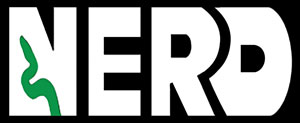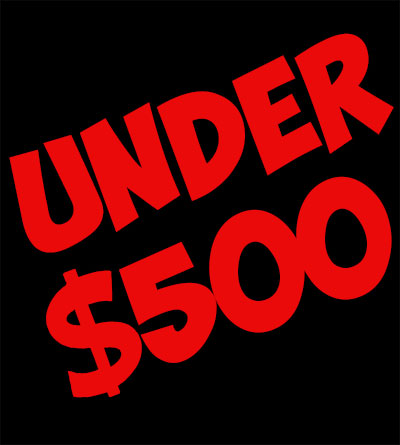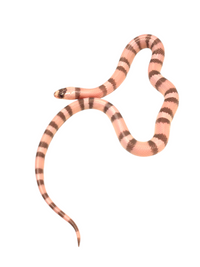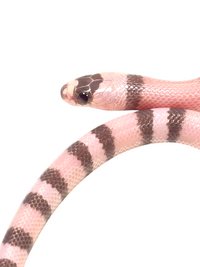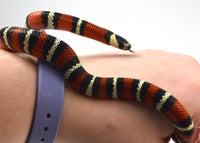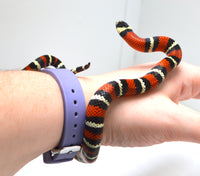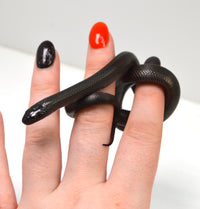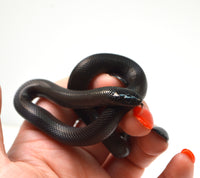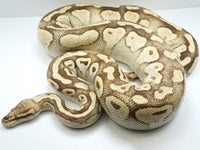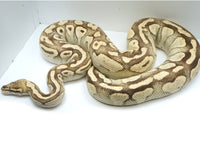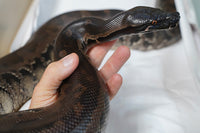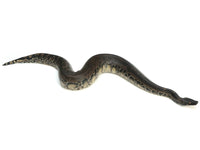Intro To Reptile Genetics
This page is intended to be a basic starting point for our other pages on various reptile genetics.
Here you will find definitions of various genetic terms, a step-by-step guide to the Punnett square, and general tips and info to assist you while reading any of the genetics pages in our herp library.
General Vocab. & Punnett Square Information
Basic Vocabulary (note – these are simple definitions intended to impart a basic concept of genetic terminology)
Albino – having absent or deficient melanin. Widely used term for “amelanistic”. See tyrosinase-negative and tyrosinase-positive.
Allele – either of the two paired genes which affect an inheritable trait.
Amelanistic – having no melanin.
Anerythristic – having no red color.
Axanthic – having no yellow color.
Codominant – a gene that causes the homozygous form to look different than the wild-type and the heterozygous form to have traits of both.
DNA (Deoxyribonucleic Acid) – molecules bearing genetic information of all living cells. Gene. Also referred to as “unit of inheritance.”
Dominant – a gene that causes an animal to look different than the wild-type and where the homozygous form and the heterozygous form look the same as each other.
Double Heterozygous – being heterozygous for two different traits.
Gene – unit of heredity that determines the characteristics of the offspring.
Genetics – the study of heredity.
Genotype – an organism’s genetic composition. Heredity – the transmission of genetic characters from parents to offspring.
Het – an abbreviation for heterozygous.
Heterozygous – possessing two different genes for a given trait. An animal with one mutated, recessive gene still appears normal; its mutated gene can be inherited by future offspring. A codominant animal is heterozygous for the dominant form of its mutated gene yet is different in appearance than both the wild-type and homozygous forms.
Homozygous – A state in which both genes for a specific trait are the same. When a recessive gene is it its homozygous form, it makes the animal look different from the wild-type. When a dominant gene is in its homozygous state, it causes the animal to look different from both the wild-type and the heterozygous (codominant) forms.
Hypomelanistic – an animal having less black and/or brown color than a wild-type.
Leucistic – a pure white animal with dark eyes.
Locus – a gene’s position on a chromosome (plural: loci).
Melanin – black or brown skin pigments.
Melanistic – abnormally dark, especially due to an increase of melanin.
Mutation – an abnormal gene that under certain circumstances can cause an animal to be born with an appearance other than wild-type.
Normal – an animal with no mutated genes – “wild type” in appearance. (See wild type).
Phenotype – an animal’s external apperance, as caused by its genotype.
Possible Het. – an animal from a known breeding that has either a 50% or 66% possibility of being “heterozygous” for a mutant gene. A 66% possible het comes from breeding 2 heterozygous animals together: 50% of the offspring are heterozygous, 25% will be homozygous, and 25% will be wild-type. Of the normal appearing animals, 66% (or roughly 2 out of 3) will actually be heterozygous for the mutated gene. A 50% possible het comes from breeding a heterozygous animal to a wild-type animal. All of the resulting offspring will be wild-type in appearance, but 50% of them will actually be heterozygous for the mutated gene and must be bred out to determine which animals are really hets.
Recessive – a gene that affects an animal’s appearance if it’s present in the homozygous state. A heterozygous animal carrying a mutated, recessive gene looks normal.
Super – commonly used herpetocultural term for the dominant form of a co-dominant mutation. i.e. Super Pastel.
Tyrosinase – an enzyme required for synthesizing melanin.
Tyrosinase-negative – an albino whose cells lack tyrosinase, producing a white and yellow/orange animal with pink eyes. A separate albino mutation from tyrosinase-positive. Also called T- .
Tyrosinase-positive – an albino not able to synthesize melanin, but capable of synthesizing tyrosinase, which results in lavender-brown skin color. Also referred to as T+ .
Wild-type – the way the animal usually looks in nature (i.e. the normal color and pattern).
Xanthic – having more yellow color than wild-type.
Punnett Squares - I never thought I’d have to know this outside of high school Bio!
To really get a grasp of recessive genetics, one must first have a general idea of how the Punnett square works.
Since most people unfamiliar with reptile color morphs have not thought about the Punnett square since junior high biology class, here’s NERD’s crash course to refresh your memory!
The Punnett square is nothing more than a tool to help predict the phenotype of offspring from two adults with known genotypes. So what is that in layman’s terms, you ask?
A square containing 4 (or more) “boxes” which compartmentalize specific letters used to designate the different combinations of alleles passed on from each parent.
|
Here is what a blank Punnett square looks like. Pretty basic, hmm? |
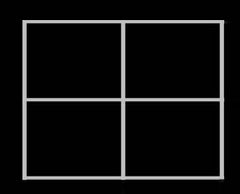 |
|
To start, we take our alleles from both parents and place them in position on the left & top of the square. In this case, we’ll be doing the square to represent two normal animals.
Their alleles will be designated NN. For learning purposes, I’ll mark each parent a separate color to make it easier to determine which allele is being added to a particular box. |

|
|
Now that we have each box designated with its own allele, it’s time to pair them up & figure out what this genetic combo will give us. The order in which the boxes are filled is “top left, bottom left, top right, bottom right” and the key thing to remember when filling in a Punnett square is “left, top…left, top.”
In other words, we start in the top left-hand box by filling in a letter from the left (N) and a letter from the top (N). So in the first picture, we complete the upper-left-hand box. Next we move on to the bottom left box and do the exact same thing (left, top…left, top!!): |

 |
|
The next two steps repeat the exact same process for the top and bottom right-hand boxes. |
 
|
| Now that our Punnett square is complete, we can see that all the offspring produced from this pairing will be normal, wild-type animals, as were both of the parents. |
 |
